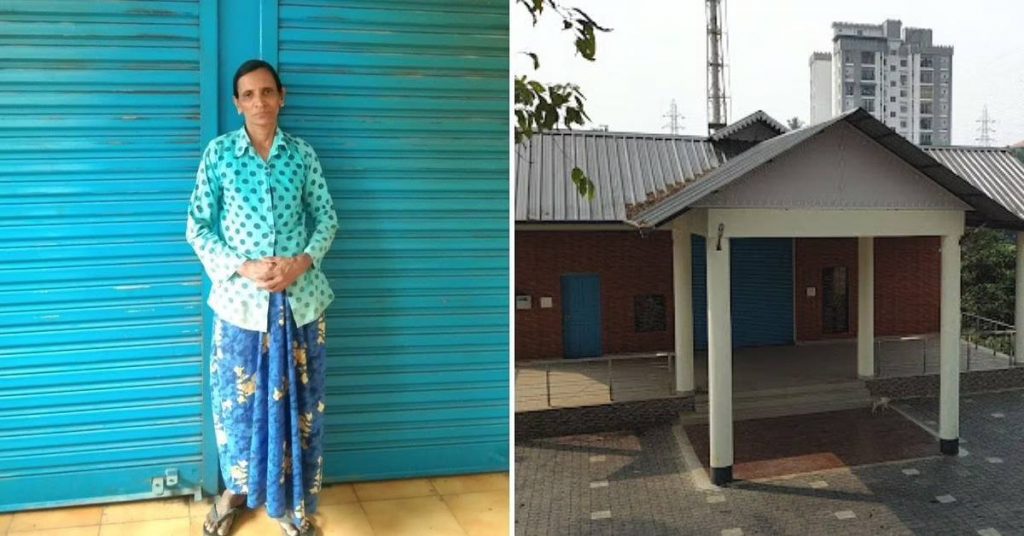This Woman Crematorium Keeper is Breaking Stereotypes

Kochi resident Selina Michael has been a crematorium worker for over a decade. She talks about how this job helps her stay afloat after a life of hardships, and how her work breaks the stigma around women performing such rituals.
“People often ask me how I handle dead bodies daily, and if I ever feel scared,” says Selina Michael, a resident of Kakkanad, Kochi. “But I’ve never felt scared, not once in my life. In fact, I am grateful that this job has been helping me take care of my family for the past 15 years.”
For over a decade, Selina has been working as a crematorium keeper. She cleans the grounds, collects firewood, performs cremation and, at times, other rituals — death is a part of her everyday life now. Selina says that she does this job not out of choice but because of difficulties she faced in her life.
About twenty years back, her husband left her and her two daughters. She had no other choice than to turn to the available jobs to sustain her and her daughter’s life. At first, she began working as a daily wage worker. “I got the chance to work at this crematorium through one of my neighbours, who had taken the tender for running it. I was doing some construction work at his house when he fell sick and was looking for someone to take care of the crematorium,” she explains.
“I didn’t think twice and asked if I could do it. Back then, I had no idea how a cremation was done but was sure that I could earn a few more bucks to raise my children,” she says, adding that she learnt the basics from him and started working at the crematorium part-time, whenever she wasn’t at construction work.
Her work begins with a phone call from the family or friends of a deceased, notifying her that they will be bringing in the body. Selina, who stays near the crematorium, immediately gets ready and leaves to prepare the pyre for the final rites. “Then I get the firewood ready and wait for the body to come in,” says the 58-year-old, who takes care of the public crematorium all by herself.
Once the body is in, Selina says that she performs the cremation and waits for hours until the whole process is complete. “It takes around two to three hours for a corpse to burn completely. But if the person had some severe illness and had medicines in the body, then it might take around four hours,” she says. She then collects the ashes and charred bones from the pyre and hands them over to the relatives of the deceased.
As a crematorium keeper, Selina is now paid Rs 1,500 per cremation. “As it is run on a tender basis, I have to pay Rs 780 per cremation to the municipality. Then I have to spend some money on buying the firewood, coconut shells and other materials. Also, I pay someone to help me with cutting the firewood. What remains after these expenses would be my earnings,” she elaborates. “There are days when around four or five corpses come in, but on some days, and even weeks, there’s nothing at all,” says Selina, pointing out that there is no fixed income as such.
She continued with her work even during the first and second waves of the pandemic, where she single-handedly managed cremating bodies of people who died due to COVID-19. Selina takes pride in what she does and says that she wants to continue this job as long as she can.
Credits: The Better India
-Staff Reporter








